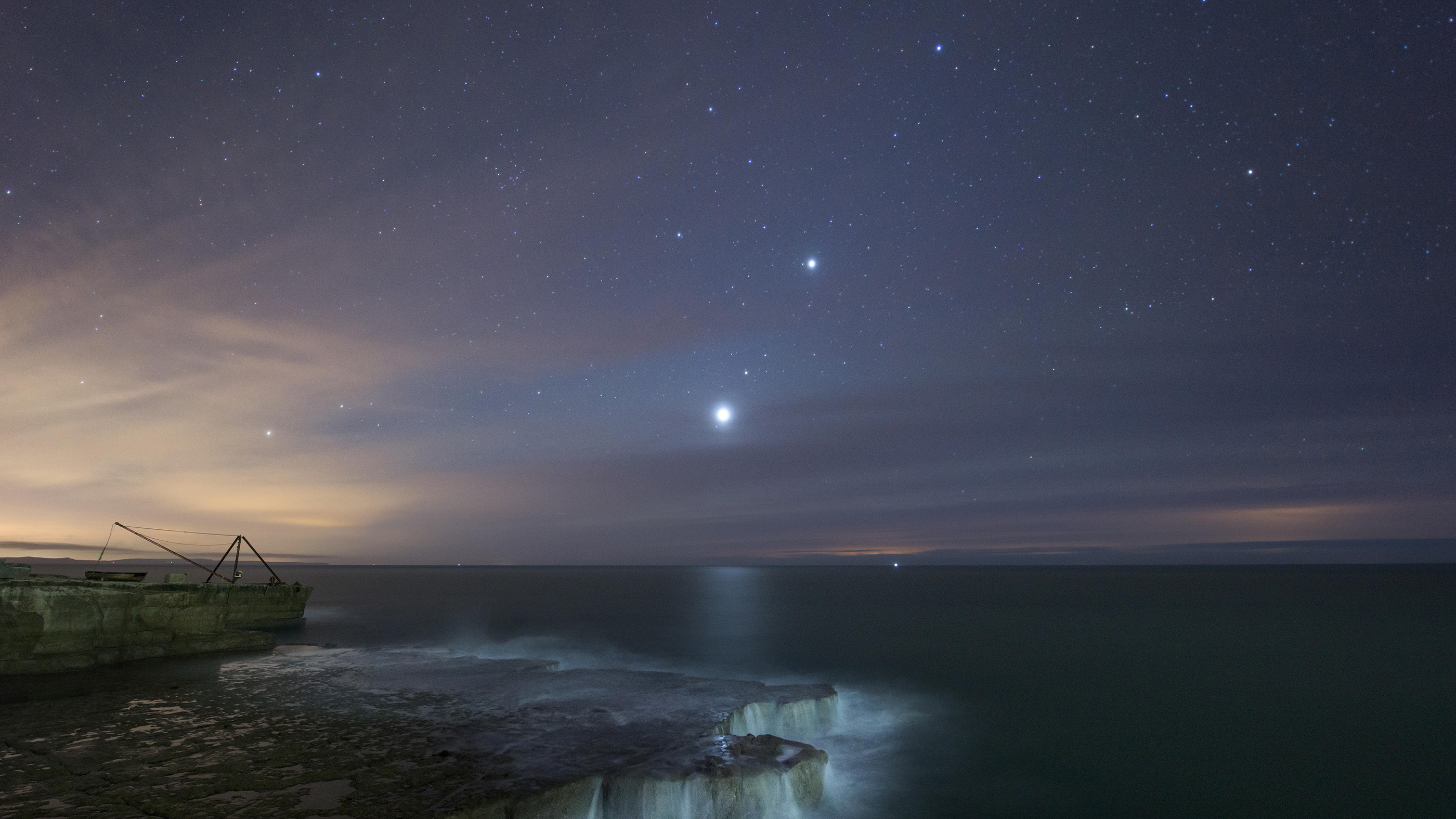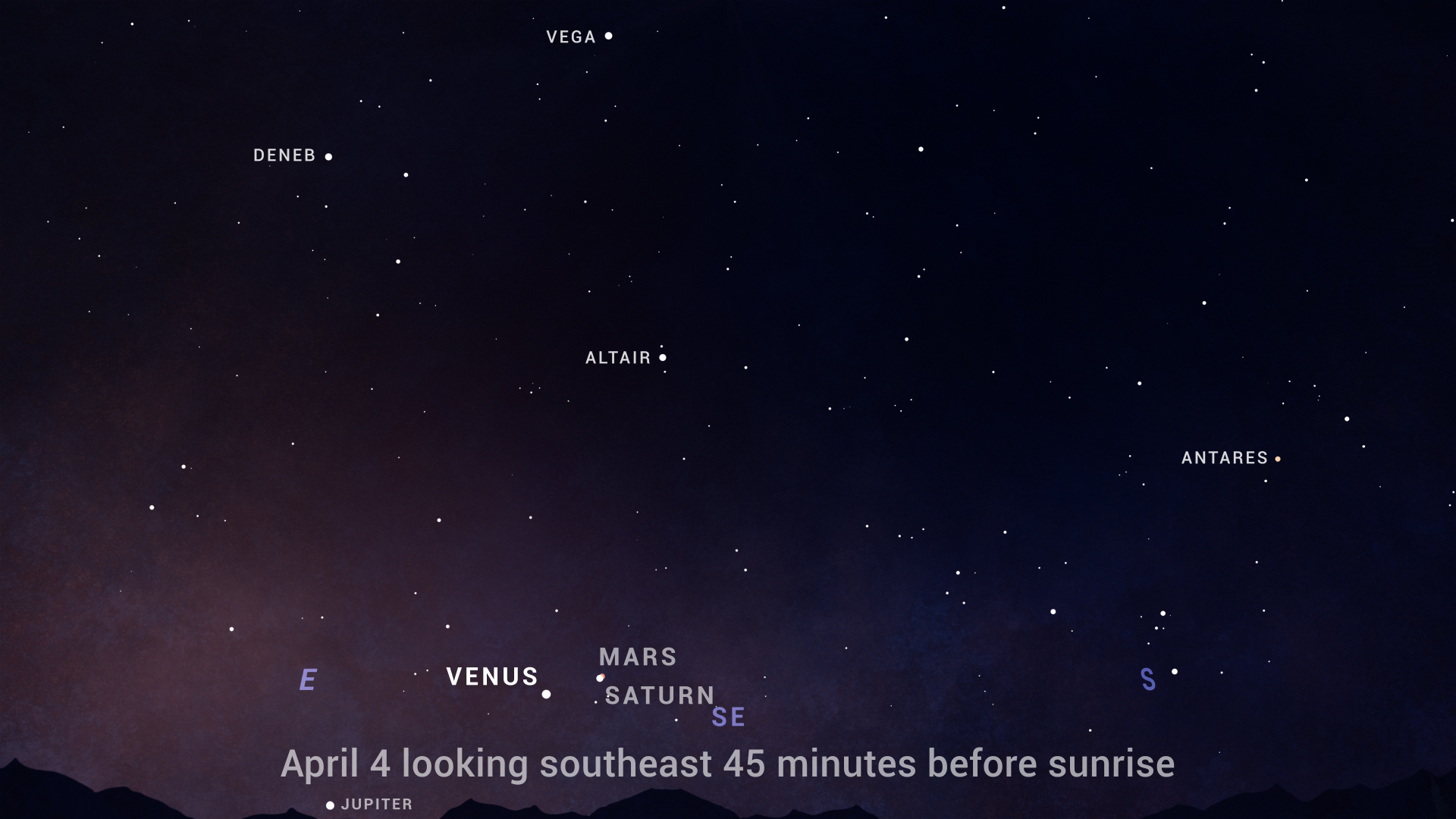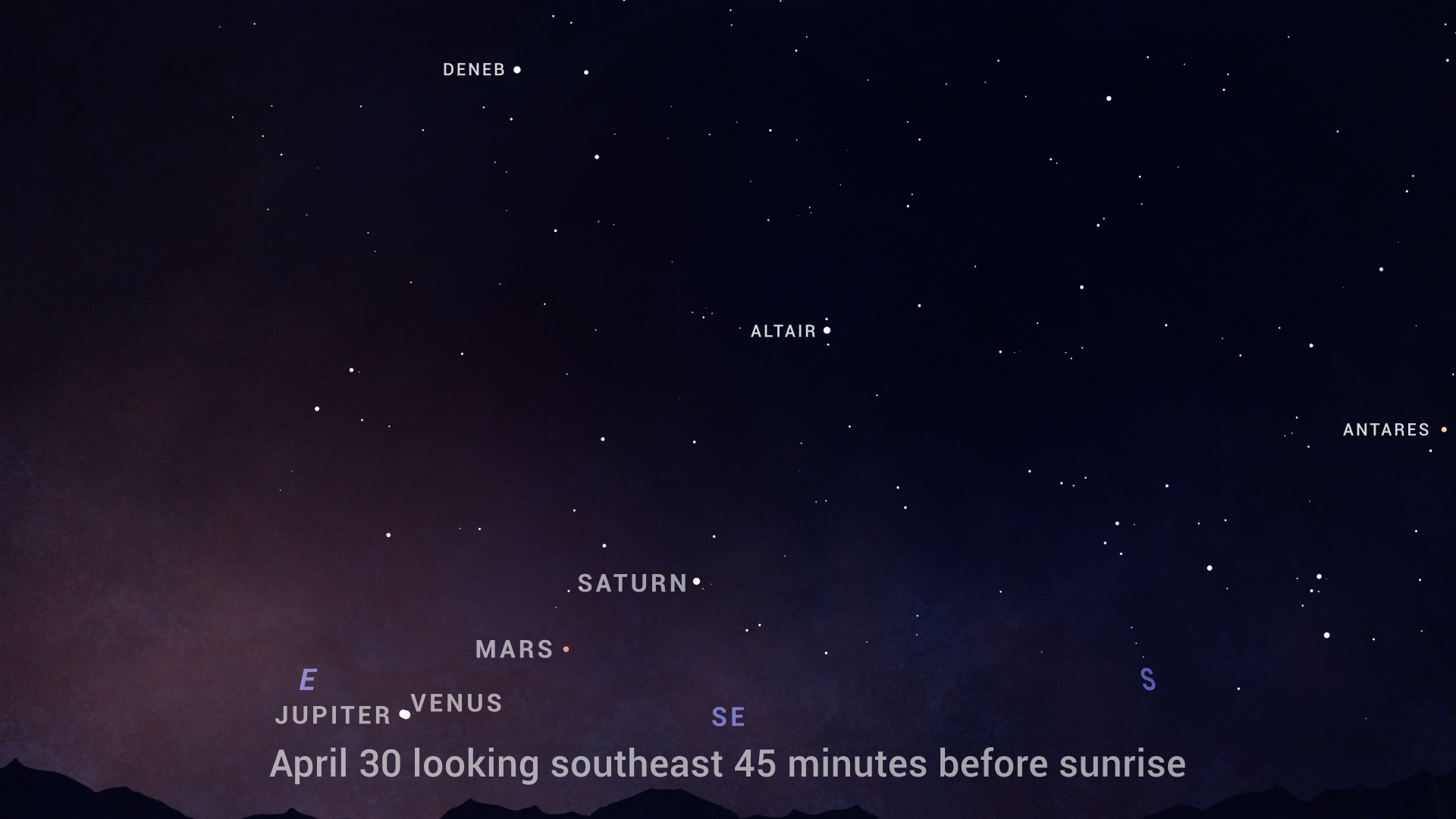The planets are prepping for an epic alignment. Here's how to see it shape up.
The planets will align this summer, but you can see them getting into position now

Five planets, visible to the naked eye, are poised to line up and march across the sky this summer in an unusual alignment that will be graced by the light of the moon.
Alignments of the five planets visible without the aid of telescopes or binoculars occur irregularly only every few years. The last time it happened was in 2020 and, before that, in 2016 and 2005, Michelle Nichols, director of public observing at Chicago's Adler Planetarium, told Live Science. Skywatchers can already see the parade of planets getting into place, but all five will be visible from late June to early July.
"We don't always get this opportunity," Nichols said. "Sometimes, it's one or two in the sky; a lot of times, it's none."
When will the planets align?
The planets aren't really in a line in space; alignments are a trick of perspective. The planets orbit the sun on a flat plane, so when they happen to be passing near each other, they look, from Earth's perspective, to be in line. An observer looking down at the solar system from above wouldn't see a straight line at all.
Related: Why do the planets orbit the sun on the same plane?
Mercury circles the sun every 88 Earth days, Venus every 225 days, Mars every 687 days, Jupiter every 12 years and Saturn every 29 years. Given these varied timelines, the planets' orbits bring them near one another at irregular intervals.

As seen in the northern hemisphere, Venus, Saturn and Mars began to cluster in late March 2022, though whether they're far enough above the horizon to view before sunrise depends on your location. Observers farther east and south in North America will have views in the wee hours of the morning, while those in the Pacific Northwest won't see the cluster rise until about an hour before sunrise.
Sign up for the Live Science daily newsletter now
Get the world’s most fascinating discoveries delivered straight to your inbox.
Around April 17, Jupiter will join the line of Venus, Mars and Saturn. The moon will move into this planetary conga line on April 23, appearing to the right and above Saturn, before moving out of view on April 29, when it will appear too close to the sun to be seen. The moon will rejoin the planetary alignment starting May 21.
Finally, around mid-June, Mercury will zip into place alongside the other four planets, Nichols said, with Earth's moon joining the party on June 17. Coincidentally, the planetary line will be in the order of the planets' distance from the sun.
"Mercury will be farthest to the east and lower, Venus will be really bright and up above it and to the right, Mars will be orange to the southeast, Jupiter will be to the upper right and then Saturn will be to Jupiter's upper right, a little bit toward the south," Nichols said.
How to see the planetary alignment

The best day to see the alignment varies based on local circumstances. In a place with a flat horizon off to the east, Mercury will be visible as early as about June 10, Nichols said, but viewers with a more obstructed view may have better luck waiting until late June for a peek. The alignment will be visible into early July, when Mercury will again dip below the horizon.
Because of its short orbit, Mercury "doesn't spend a whole lot of time in one part of the sky," Nichols said.
For people in North America, the best way to see the alignment is to go outside and look to the south and east about 45 minutes before dawn local time in late June, Nichols said. Mercury, Venus, Mars, Jupiter and Saturn will all be visible to the naked eye. Also in the sky, though far more difficult to see, will be Uranus and Neptune. Uranus will likely be visible with a pair of binoculars in areas with little light pollution, Nichols said, but seeing Neptune will require the use of a 6-inch telescope.
To tell the planets from the surrounding stars, look for steady light. The light from planets is less affected by Earth's atmosphere than the light from stars is, Nichols said.
"The rule of thumb generally is, stars twinkle; planets don't," she said.
There will also be some obvious landmarks, Nichols said. On June 27, for example, Mercury will be below and to the right of the thin crescent moon, which may make it easier to find Mercury.
"You do have to set the alarm in order to do it," Nichols said, "but it's just a fun time to go see planets in the sky and learn what they look like."
Originally published on Live Science.

Stephanie Pappas is a contributing writer for Live Science, covering topics ranging from geoscience to archaeology to the human brain and behavior. She was previously a senior writer for Live Science but is now a freelancer based in Denver, Colorado, and regularly contributes to Scientific American and The Monitor, the monthly magazine of the American Psychological Association. Stephanie received a bachelor's degree in psychology from the University of South Carolina and a graduate certificate in science communication from the University of California, Santa Cruz.









